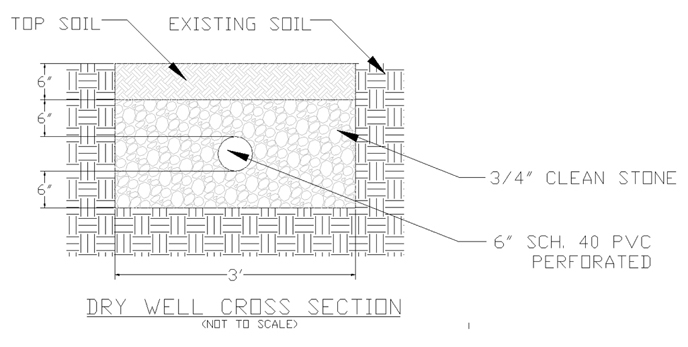
Dry well - bird's eye view
CConstruction of Back Paddock Drainage – Dry Wells
Construction of Back Paddock Drainage – Dry Wells

Dry well - bird's eye view

PVC piping on top of stone

Dry well cross section

Laying PVC pipe

Covered up trench